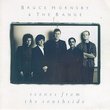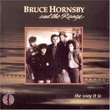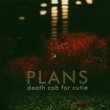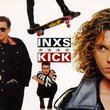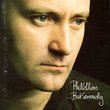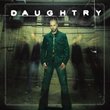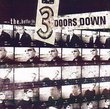| All Artists: Bruce Hornsby Title: Night on the Town Members Wishing: 0 Total Copies: 1 Label: RCA Original Release Date: 6/19/1990 Re-Release Date: 5/25/1990 Genres: Alternative Rock, Pop, Rock, Classic Rock Styles: Adult Contemporary, Soft Rock, Vocal Pop, Adult Alternative, Album-Oriented Rock (AOR) Number of Discs: 1 SwapaCD Credits: 1 UPCs: 078635204124, 078635204117, 078635204148, 743211600125 |
Search - Bruce Hornsby :: Night on the Town
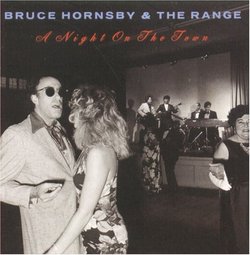 | Bruce Hornsby Night on the Town Genres: Alternative Rock, Pop, Rock, Classic Rock
![header=[] body=[This CD is available to be requested as disc only.]](/images/attributes/disc.png?v=430e6b0a) ![header=[] body=[This CD is available to be requested with the disc and back insert.]](/images/attributes/disc_back.png?v=430e6b0a) ![header=[] body=[This CD is available to be requested with the disc and front insert.]](/images/attributes/disc_front.png?v=430e6b0a) ![header=[] body=[This CD is available to be requested with the disc, front and back inserts.]](/images/attributes/disc_front_back.png?v=430e6b0a) |
Larger Image |
CD DetailsSimilar CDsSimilarly Requested CDs
|
CD ReviewsHornsby Goes In Some New Avenues and Still is a Winner L.A. Scene | Indian Trail, NC USA | 01/26/2005 (4 out of 5 stars) "When Bruce Hornsby and the Range released 1988's "Scenes From the Southside", he set the bar very high. It is that sophomore effort that has to be considered one of the great and underrated albums of the 1980s. In a lot of ways "Scenes From the Southside" picked up where Hornsby's debut album "The Way It Is" left off - expanding on a formula that worked very well. That formula has Hornsby at the core with his solid piano/keyboard work combined with a solid combination of support by his band - The Range, and working with some top notch songwriting (done by Bruce and his brother John). For Hornsby's third album, "A Night On The Town", Hornsby starts to change things up for the first time - going in some different routes that he had not previously explored. Although it still is tough to measure up to a masterpiece like "Scenes", it still is another great effort by Hornsby and his band. On those first two efforts, Hornsby pioneered something that has been called "The Virginia Sound". The best way I can describe this sound is a mixture of a lot of different genres of music: Jazz, Classicial, Bluegrass, Rock, Country, and Pop. Hornsby incorporates a wide range of instruments in the songs to give this such a distinct sound: Mandolin, Guitar, Violin, Piano, and even Harmonica. On those first two albums, if I had to pick a strong influence from those genres - I would probably lean toward Bluegrass. For "A Night On The Town", Hornsby begins to emphasize some of the other genres. This album will have more influences on the Rock and Jazz. Hornsby does continue to use a wide range of instruments - and finds a way to combine them in some very interesting ways. For example, "Fire On the Cross" contains a combination of Banjo and Tenor Sax - yet the song still has a very distinctive Rock feel. In fact, the late Jerry Garcia makes some outstanding guitar contributions. On the first two albums, Hornsby made use of The Range's George Marinelli and Joe Puerta to provide some outstanding background vocals. On this album, Hornsby makes more use of external third party vocalists - particularly female vocalists. The most notable background vocalists are Shawn Colvin (who actually has co-lead vocals on "Lost Soul"), Arnold McCuller, Fred White and Bridgette Bryant (the latter three are better known as Phil Collins' "Seriousette" band members from his 1990 "Serious Tour"). If you are a fan of the first album, you are going to go through an adjustment period with this collection. After several listens, you will realize that "A Night On The Town" measures up to the high standards you come to expect from a Bruce Hornsby album. Here is a quick synopsis of each of the tracks: "A Night On The Town": This title track will immediately introduce the harder Rock edge. This song is sung in the classic narrative style that Bruce seems to have perfected as he tells the story of two middle-aged men "Van and Willie" as they wreak havoc when they have "A Night On the Town". Some great songwriting. "Carry The Water" has a Rock beat - but you can hear touches of R&B in it. This is a song where Bruce utilizes background vocalists - Laura Creamer and Shawn Murphy. The chorus has some great piano work by Bruce. "Fire On The Cross" has all of the makings of a Bruce Hornsby classic. This song took me a few listens to get into. This song (great songwriting) - is sung in a narrative from someone witnessing a KKK cross burning. What I love about this song is the combination of Banjo and Sax on top of what is a Rock song. Hornsby's keyboard work is in prime form. "Barren Ground" features Shawn Colvin on background vocals and Jerry Garcia on guitar. This song is like a song found on the first two albums - namely about the land. Colvin's background vocals give it a different feel from that album. "Across the River" was the hit single. Superb effort. Garcia contributes to some of the great guitar work (particularly on the song's bridge) and Bruce is mastering the ivory again on the chorus. The song has touches of Jazz in it. More great background vocals by Creamer and Murphy. "Stranded on the Street" also has more of a feel from the first two albums. It is sung in a narrative and has some of the "Huey Lewis" feel, but without Huey. Some nice harmonica work. "Stander on the Mountain" has some great percussion work by John Molo. This also has some classic Hornsby narrative style and has more of a Rock feel. It also features some violin by former Range member David Mansfield. Colvin provides background vocals. "Lost Soul" is for all practical purposes a duet with Bruce and Colvin. They blend nice on the chorus. Nice way the piano work and synthesizers blend. It's a soft song and after a few listens, you will get into it. "Another Day" is very much a clapping and toe tapping song. It has a Jazzy, Bluesy feel to it. Hornsby again does great on the ivory. McCuller provides background vocals. "Special Night" once again brings the Rock feel to it, but you will hear touches of Jazz on it. Colvin is back for more background vocals and once again is a great compliment. "These Arms of Mine" also has a Jazzy/Bluesy feel to it. This song will take a few listens to get into. McCuller, Bryant and White provide background vocals that really are the core of this song. Garcia is back on guitar. The liner notes contain all of the lyrics as well as musician and songwriting credits. As mentioned, this album and some of the songs may take a few listens to get into. If you liked the first two Hornsby albums, you should also really enjoy this album. " Hornsby gets the "mellow monkey" off his back! hdhisaw@mindspring.com | LaGrange, Georgia | 07/12/1998 (5 out of 5 stars) "When he began writing for this his third album, Bruce was tired of being labeled as AOR or "mellow." By God, this sure helped him shake that mellow label. He departs from the mostly-piano-strings-and-some-token-guitar formula of earlier albums and begins exploring his roots. This CD is much more jazzy and bold than the first two (although they're excellent in their own right; don't get me wrong here). I was one of the first Hornsby fans to run out and buy this CD in June 1990, and I couldn't help wondering whether it would be an unpleasant departure from his earlier music. I was very pleased once I listened to it. My advice to you, if you're a new Hornsby listener, is to buy the first 3 or so CDs and listen to them back to back to back and see for yourself how his style has grown over the years. (The growth continues on _Harbor Lights_ and _Hot House_, but that's material for another review.) Happy listening to you! --Rachael Williams Hisaw" Another Solid Album From Bruce Hornsby Mike S | Front Royal,Virginia United States | 01/30/2000 (5 out of 5 stars) "If you love Bruce's typical musical style, you'll love this album as much as his first two. There's a little more electric guitar on this one, than before and it sounds great mixed in with hornsby's heavy keyboard-based sound. Every song is good on this CD. There's a great mix of ballads and rockers throughout the album. BARREN GROUND, ACROSS THE RIVER, and the haunting ballad LOST SOUL stand out the most from the other songs. I have nothing negative to say about this great CD."
|

 Track Listings (11) - Disc #1
Track Listings (11) - Disc #1![Hommage à Mozart [Hybrid SACD]](https://nationalbookswap.com/cd//m/78/2978/6172978.jpg)
